Sunscreens
What Would You Like to Know About?
Sunscreens & Sun Protection 101
Protection from ultraviolet (UV) radiation is important for keeping skin healthy and in its best appearance. There are several steps that you can take to protect your skin from UV radiation. These include: covering up with protective clothing & wearing sunglasses with UV filters, avoidance during the peak UV hours of the day (10 am to 2 PM), seeking shade, and using sunscreen.
UPF Rated Clothing
Covering up with clothing is an excellent strategy for sun protection. Not all clothing is equally sun protective. A specialized rating system called UPF (ultraviolet protection factor) can help one choose more protective clothing. The higher the UPF rating, the more protective. For reference, a typical white cotton T-shirt has a UPF of 5, which means that it allows ⅕ or 20% of UV transmission. Clothing with a UPF rating of 40 and higher provides excellent sun protection. As the benefits of UPF rated clothing have become more recognized over the years, a variety of lightweight and comfortable UPF rated options have become available.
Sunglasses
UV radiation can cause eye damage, including cancer and cataracts. Sunglasses can help prevent this. When choosing sunglasses, look for a sticker or tag that indicates that they block 100% of UV rays. Bigger is better. The more coverage from sunglasses, the less damage inflicted on the eyes.
Sunscreen
Sunscreens are an essential part of UV protection. Everyone, no matter what type of skin type, should wear sunscreen to avoid development of sunburns, skin cancers and skin aging.
The American Academy of Dermatology recommends wearing a broad spectrum sunscreen with a Sun Protection Factor (SPF) of 30 or higher. Broad spectrum means protection against UVB and UVA rays. UVB radiation causes sunburns and is more highly associated with skin cancer, UVA exposure causes skin aging (brown spots, wrinkles) and is also linked to the development of skin cancers.
The SPF rating system measures protection from UVB radiation. The higher the SPF, the greater the protection. It is controversial how much more protection sunscreens with SPF greater than 30 protect your skin. Recent studies do suggest that higher SPF sunscreen provides better protection from ultraviolet damage. Remember also that most people do not apply the recommended amount of sunscreen nor do they reapply sunscreen as frequently as recommended.
Note that you are exposed to ultraviolet radiation on cloudy overcast days, as certain ultraviolet wavelengths can penetrate through clouds, and windows. You must apply copious amounts of sunscreen to attain the SPF level of protection, typically one ounce or two tablespoons to exposed skin. There are also no truly waterproof sunscreens. Most sunscreens will break down, wash off in the water, and generally be less effective after 40-80 minutes. Frequent reapplication while spending extended amounts of time in the sun is critical to protecting your skin from ultraviolet radiation.
There are 2 different types of sunscreen agents. One group is chemical sunscreens, and the second group is physical or mineral sunscreens. Chemical sunscreens act like a sponge by absorbing the sun’s rays. Physical sunscreens act like a shield by sitting on the skin surface and deflecting UV radiation.
Chemical sunscreen agents are applied to skin, and undergo a chemical reaction to become active. They require 15-20 minutes to become active, so if your sunscreen only has chemical sunscreens it should be applied 15-30 minutes before you are outdoors. Most sunscreen agents are chemical sunscreens. This group of sunscreen can cause skin allergies. There is controversy that various agents can mimic estrogen (female hormone) and anti-androgen (male hormone) when absorbed, but the harm of these agents have not been verified in studies.
Physical sunscreen agents create an immediate shield from UV radiation. There are two commonly used physical sunscreens: zinc oxide and titanium dioxide. These agents do not cause skin allergies. Most physical agents are made in micronized or nanoparticle size, which make them cosmetically more elegant (less white or pasty looking). One concern over these smaller particle sized sunscreens is that they may travel into skin and actually reflect UV radiation within the skin, leading to potential damage. However, this has not been substantiated in studies with regards to actual harm. These agents are felt to be safe.
Look at your sunscreen label, and it will have an active ingredient list of sunscreen agents.
Chemical Sunscreen Agents
| Agent | Use in sunscreen | Skin allergy | |
| Oxybenzone | Widespread (found in 65% of sunscreens) | Common | |
| Octinoxate (Octylmethoxycinnamate) | Widespread | Moderate rates | |
| Homosalate | Widespread | Rare | |
| Octisalate | Widespread | Rare | |
| Octocrylene | Widespread | High | |
| Avobenzone | Widespread | High | |
| Mexoryl SX | Widespread | Rare | |
| Benzophenone-4 | Rarely used | ||
| Benzophenone-8 | Rarely used | ||
| Menthyl Antranilate | Rarely used | ||
| PABA | Rarely used | ||
| Padimate O | Rarely used | ||
| Trolamine Salicylate | Rarely used |
Physical Sunscreen Agents
| Agent | Use in sunscreens | Skin allergy | |
| Zinc Oxide | Widespread | None | |
| Titanium Dioxide | Widespread | None |
OTC Sunscreen Recommendations
Sunscreen
Daily Facial
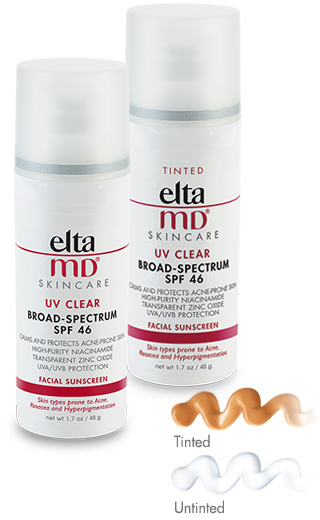
Elta MD Clear
- Neutrogena Hydro Boost Sunscreen SPF 50
- CeraVe AM Facial Moisturizing Lotion SPF 30
- La Roche-Posay Anthelios Ultra Light Suncreen Fluid SPF 60
- Aveeno Positively Radiant Sheer Daily Moisturizer SPF 30
Non-Chemical
Daily Facial
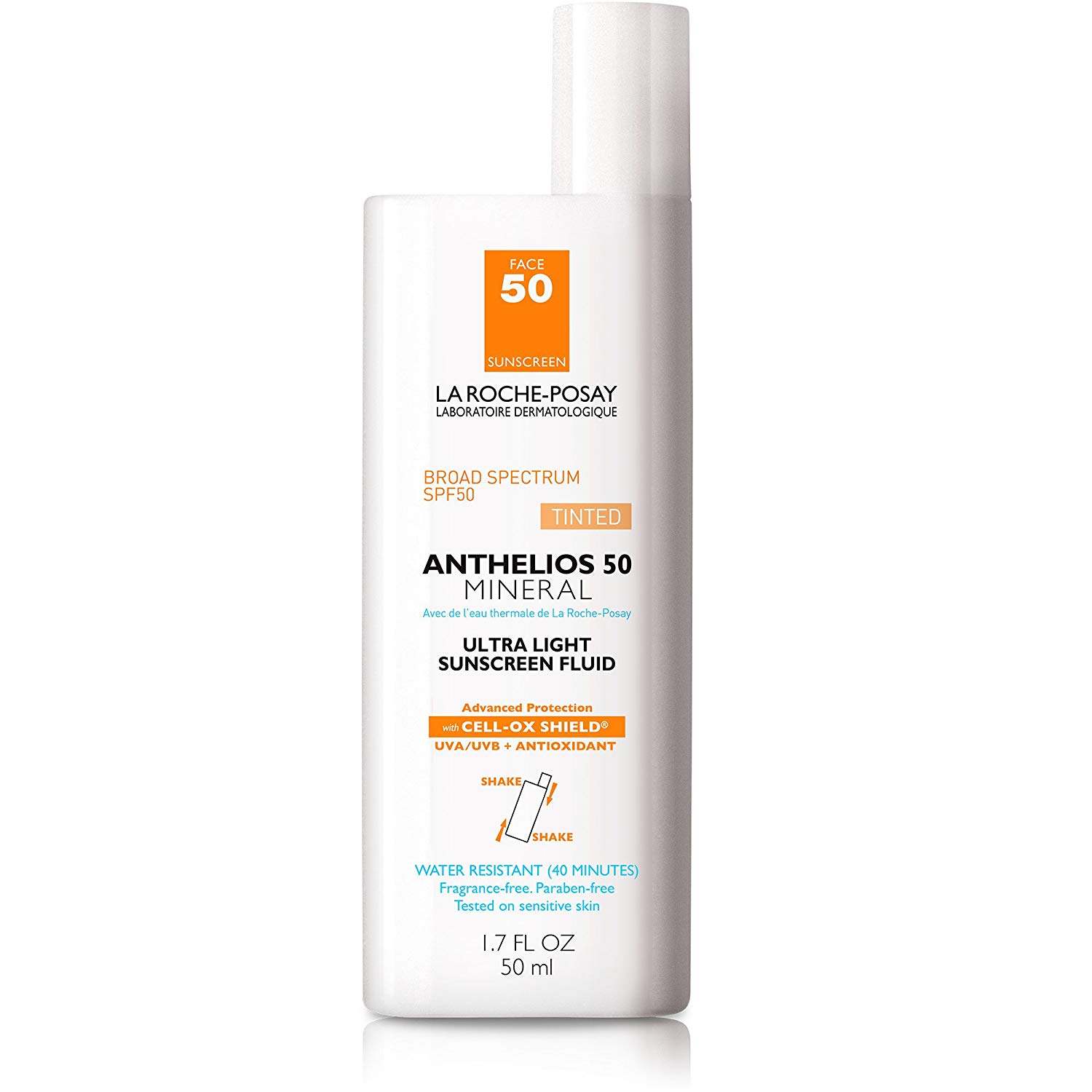
La Roche-Posay Antihelios Ultra Light mineral SPF 50
- Elta MD Physical SPF 41 Tinted
- Cetaphil Sheer Mineral Face Liquid Sunscreen SPF 50
- Alastin Hydratint Pro Mineral
- Avene Mineral Sunscreen Fluid SPF 50+
- Neutrogena Sensitive Skin Face Liquid
Acne Prone Skin

Elta MD Clear
- Cetaphil Oil Control Moisturizer SPF 30
- Neutrogena Clear Face SPF 55
- Colorscience Sunforgettable Brush-On (powder) SPF 30 (best for reapplication, not as primary sunscreen, non-chemical)
- La Roche-Posay Anthelios Tinted Ultra Light Mineral Sunscreen SPF 50 (non-chemical)
Sensitive Skin
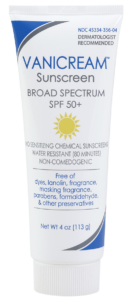
Vanicream Broad Spectrum SPF 50
- Elta MD Physical SPF 41 Tinted Facial Sunscreen (non-chemical)
- Cetaphil Sheer Mineral Face Liquid Sunscreen SPF 50
- CeraVe Hydrating Face Mineral Sunscreen SPF 5o (non-chemical)
- Neutrogena Sheer Zinc SPF 50 (non-chemical)
- Colorscience Sunforgettable Brush-On (powder) SPF 30 (best for reapplication, not as primary sunscreen, non-chemical)
Sport

Elta MD Sport
- Blue Lizard Water Resistant Sport Sunscreen SPF 30+
- Neutrogena Ultra Sheer Dry-Touch (numerous SPF ratings available)
- Neutrogena CoolDry Sport Sunscreen Lotion SPF 70
- Bullfrog Land Sport SPF 50
Non-Chemical Body
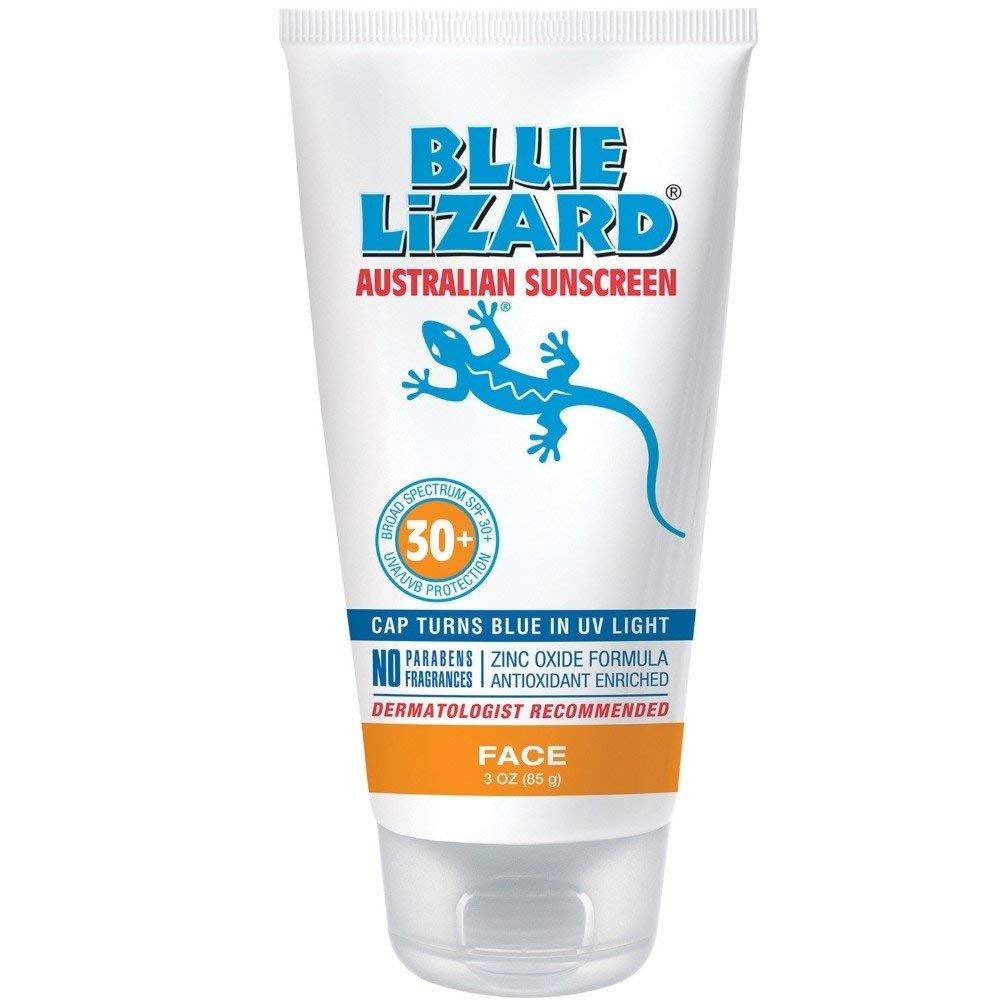
Blue Lizard Sensitive Sunscreen SPF 30+
- Elta MD UV Active Broad Spectrum SPF 50
- Vanicream Broad Spectrum SPF 50
- Neutrogena Sheer Zinc SPF 50
- Aveeno Positively Mineral Sensitive Skin SPF50
Lip

Vanicream Lip Protectant/Sunscreen
- Elta MD Lip Balm SPF 31
- Aquaphor Lip Protectant Plus Sunscreen SPF 30
- Banana Boat Sport Performance Lip Balm SPF 50
- Colorscience Sunforgettable Lip Shine SPF 35 (tinted)
Kids/Baby
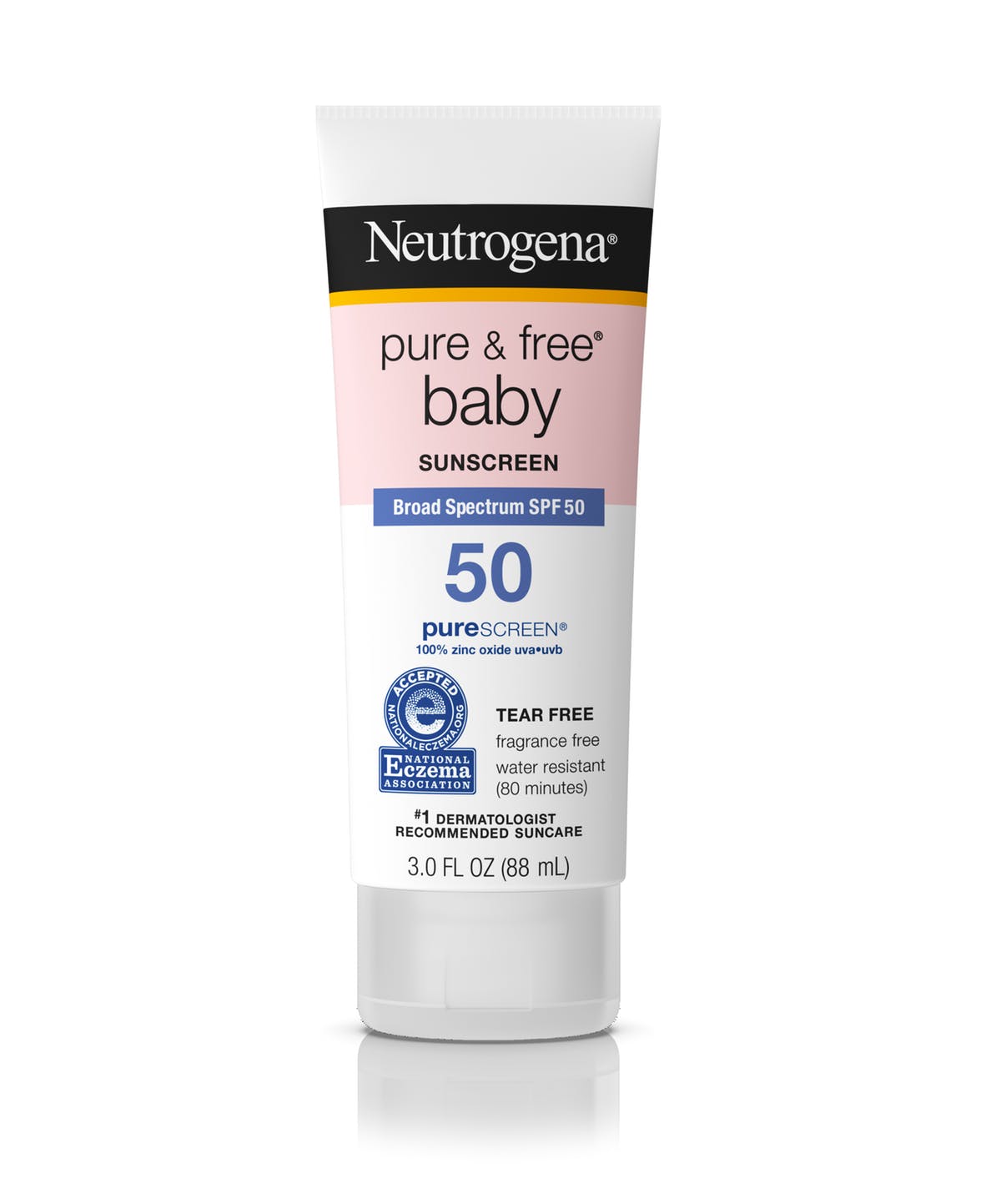
Neutrogena Pure and Free Baby SPF 50+ (non-chemical)
Blue Lizard Baby Mineral Sunscreen SPF 50+ (non-chemical)
CeraVe Mineral Baby Sunscreen Lotion SPF 45 (non-chemical)
Aveeno Baby Continuous Protection SPF 50 (non-chemical)
Instructions
Apply generously 15-20 minutes before going outdoors.
Apply enough to cover exposed skin, typically one ounce or two tablespoons.
When outdoors, reapply sunscreen every two hours or immediately after swimming or heavy sweating. Keep in mind that no sunscreen is truly waterproof.
OTC Tips
- Choose a sunscreen that has an SPF 30 or higher
- Choose a broad spectrum sunscreen, preferably one that contains zinc or titanium.
- Choose a sunscreen that is water resistant, especially if in and around water or sweating heavily.
- Choose a sunscreen that you like! Some people like sunscreens that feel lighter whereas others like ones that are more moisturizing. If you pick one that you like, you are more likely to use it on a regular basis.
- For the best results, if you are using a moisturizer and a separate sunscreen, the moisturizer should go on first, then sunscreen, then makeup. If you are also using a topical medication, that should be applied before everything else, then the rest of the layering process is repeated.
- Spray sunscreens do not usually provide adequate coverage.
- There is data that suggests that even small amounts of oxybenzone and octinoxate can harm coral reefs. It is best to avoid these ingredients when in the ocean.
- While there is a concern regarding the safety of some chemical sunscreens, most dermatologists do not feel that there is adequate data to suggest harm. The FDA recognizes zine oxide and titanium dioxide as GRASE (generally recognized as safe & effective).


